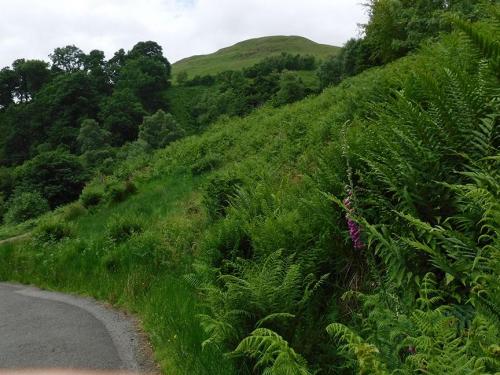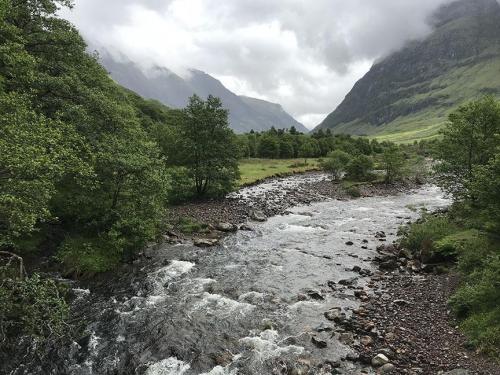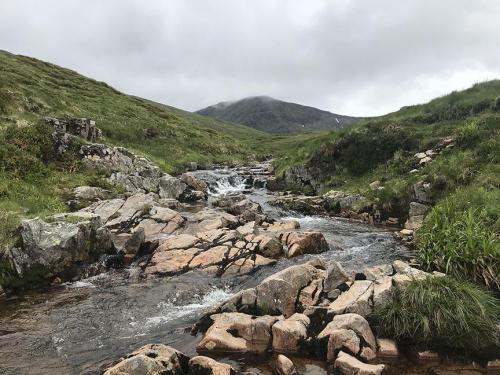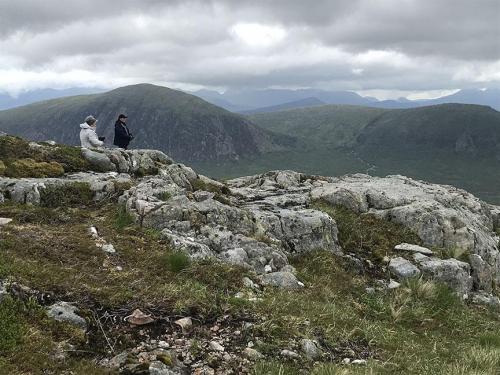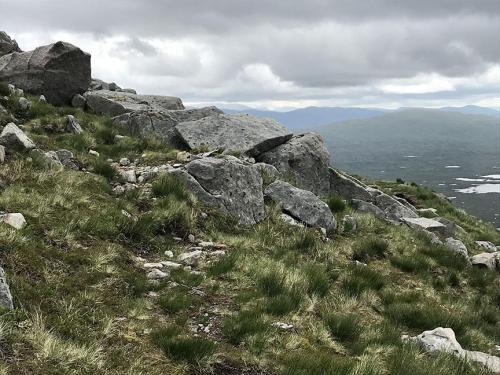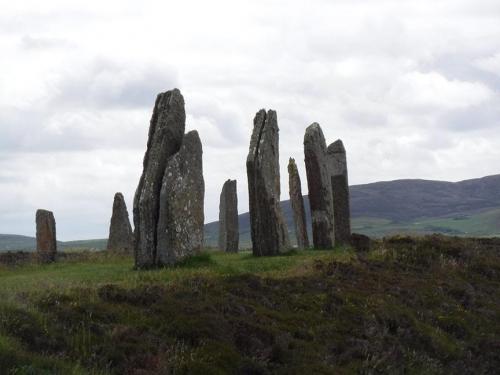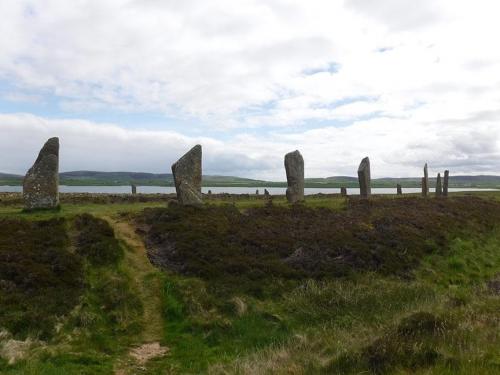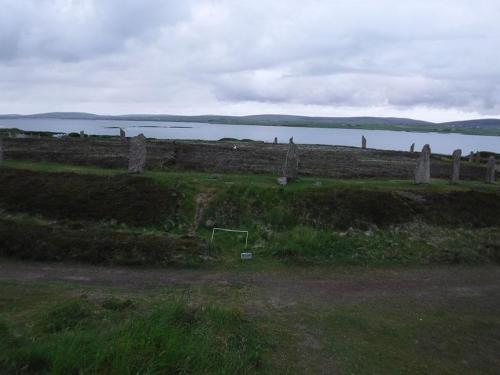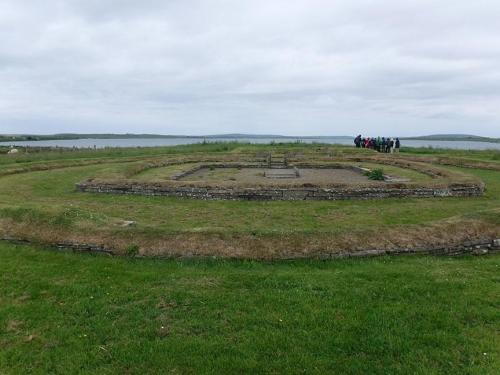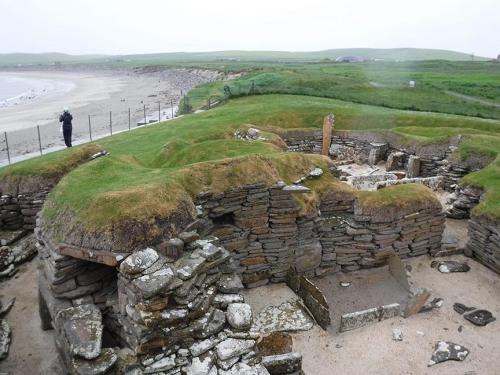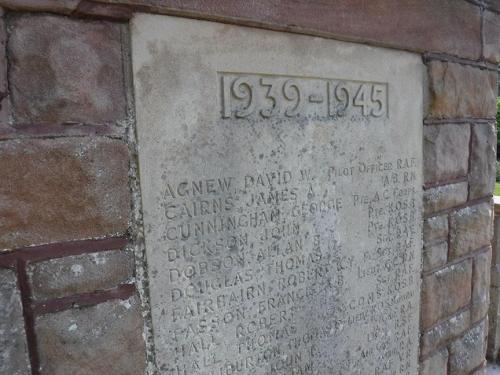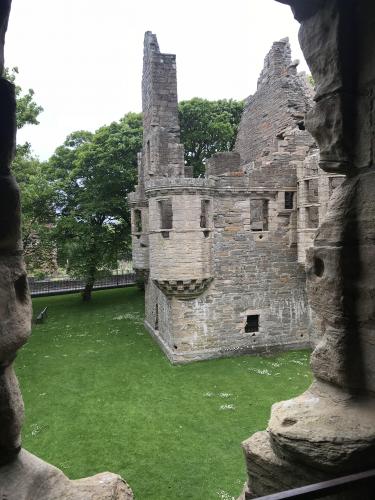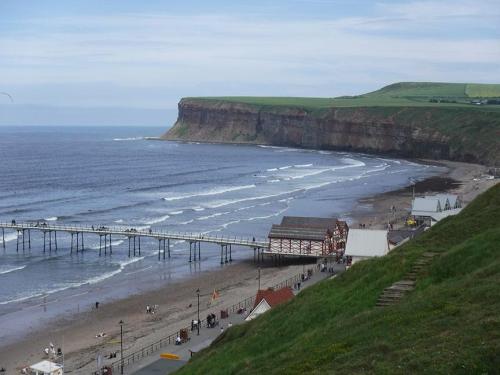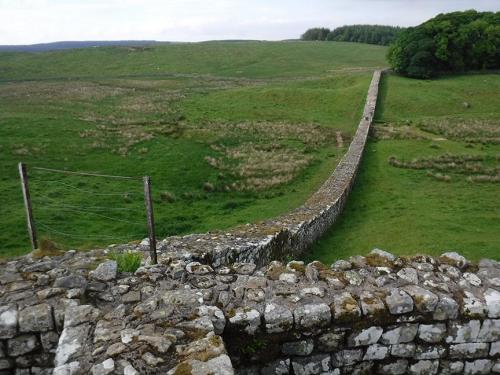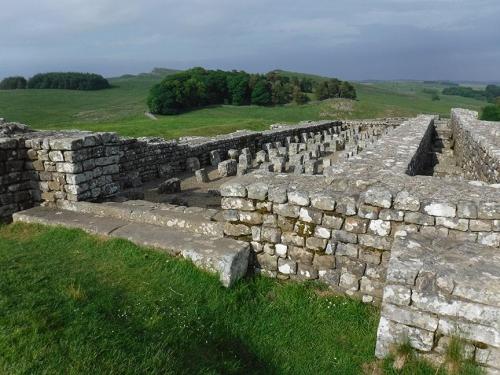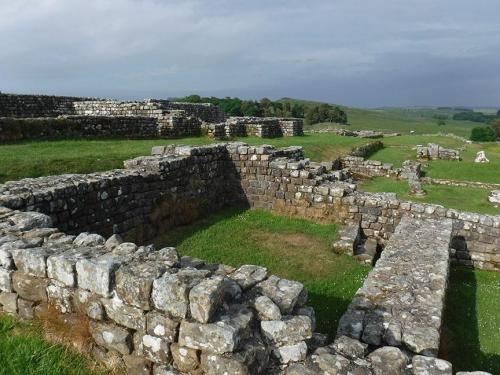
Al Agnew
Fishing Buddy-
Posts
7,067 -
Joined
-
Last visited
-
Days Won
26
Content Type
Profiles
Forums
Blogs
Events
Articles
Video Feed
Gallery
Everything posted by Al Agnew
-
There's an MDC access at Scott Ford, overnight parking there should be okay but it's obviously parking at your own risk. You might contact the private campground and canoe rental there, Adventure Outdoors (adventureoutdoorcanoeing.com) and see if you can leave your vehicle with them. You shouldn't have issues with gravel bar camping as long as you camp on a bar that doesn't have a house within sight or a lane or road leading down to it.
-
I believe your big one is a hybrid, not pure spotted bass. Nice fish!
-
Point of fact...the sales tax is NOT earmarked for land acquisition. The Design for Conservation plan, which is still the blueprint for spending the money, called for as much land acquisition as possible in the early years and in key areas, but then called for using the money for maintenance of the land that was bought after a period of years that has long since passed. MDC still takes advantage of opportunities to buy properties that they feel will be very valuable, but is no longer in an aggressive land acquisition phase.
-
Well, given the political climate, that the government doesn't want to spend money on anything to do with the environment (while spending plenty of a lot of other stuff), and given that it will cost a bunch no matter what to make the lake safe from failing in a major earthquake or huge flood, I doubt that much will end up being done with it, and they may truly decide just to drain it. The earthquake thing is interesting...a few scientists specializing in earthquakes are now saying that the New Madrid Fault System is settling down and will probably never produce another major quake, and certainly the chances of it happening are so slim that it doesn't make sense to spend the money to make everything earthquake resistant in this part of the country.
-
Found a few this morning, but not many. Plenty of fungus in the woods, though. Didn't bring any of my ID books, so didn't know if anything else was edible.
-
I have one of those little Japanese mini trucks for use on our land, but it hasn't been running for about a year now. So today I bought a new battery and messed around with it a bit and got it running. I took it up the lane leading to the food plot in the woods behind the house. As I was heading up the hill to the food plot, I saw something bright yellow in the middle of the lane, and instantly knew what it was. Remember the really wet summer a couple years ago when the mushrooms went crazy? I had found chanterelles right in that same spot that summer. I stopped and wandered up the lane, picking a dozen or so. Then I went to another spot on our land that was full of them that year, and found a few more. Not quite like that year, when we found them just about everywhere and had bushels of them. But enough to add to our grilled, smoked chicken tonight. I think we'll get up in the morning and go for a short hike in the spot where we found a ton of them that year.
-
I had to go out to our land on the Meramec to mark a construction site for the whole DigRite thing where the utility companies locate any lines that might be in the way. So I hooked up the jetboat, figuring it wouldn't take long to do the marking, and after all, if you're gonna drive more than an hour for 15 minutes' work, you might as well make it worthwhile. There was a chance of thunderstorms, but I figured I could get in a half day of fishing, anyway. There were four boat trailers in the parking lot when I got there. Dang, were they all fishermen? Which was should I go...head upstream and fish back down, or start fishing at the ramp and fish downstream as far as I wanted and motor back up? Right after I put the boat in, here came a boat downriver. Looked like they were taking out. Well, that's one boat less, anyway. I started up the motor and headed upstream. Got about 500 yards, and realized I had left my hat in the truck. Turned around and headed back down to get it. When I came back down to the boat, the other boat had gone up the ramp, and I was looking at that rocky bank at the bridge pilings. Dang, that looked good. I had thought to leave it until last as I drifted back down, but for some reason I decided to fish it before heading upstream. I grabbed the rod with the HD Craw. Second cast, I set the hook into a heavy fish. At first, weirdly, the smallmouth didn't fight much. I got it up to the surface, close to the boat. NICE fish. I reached down to lip it. THEN it totally freaked out. It took me a good five minutes to get that thing in, it just went nuts. Had to dig out the net and net it, finally. Just under 19 inches. Not bad for the first fish of the day, and had I not forgotten my hat, I wouldn't have fished that spot. Rest of the trip was routine. Mediocre fishing, mostly topwater, missed one other really good fish that blew up on the walk the dog lure, caught a couple in the 15 inch class and 25 or 30 altogether, most 10-12 inchers. At one point, the river got somewhat more murky as a slug of almost muddy water came down, probably from rains on Dry Fork the day before. Didn't affect the fishing.
-
Spring river sink hole mystery solved
Al Agnew replied to netboy's topic in General Angling Discussion
Yeah, when you looked at the aerial views, it was pretty obvious that it was just a hole in the ledge. I don't think they needed to put in enough dye to turn the whole river chartreuse. -
I don't think gar teeth would fray braided line. Unlike members of the pike family, which have sharp edges on their teeth, gar teeth are round. However, that doesn't mean it wasn't a gar...the gill plates on gar are very sharp.
-
I agree with Ness. The line that's on it is probably decently matched with the rod. But if you insist you need a new line, I wouldn't over-line it, either. Just get a good 5 weight, weight forward, floating line. And you don't need a camo line, in fact, it probably won't make any difference whatsoever in the stealth of the line. It's a floating line. It will lie on the surface, and the fish will be looking up at it, which means they are seeing it against the brightest part of their environment. A light greenish or yellowish line will blend into that background better than a darker camo line, but the fish will still be able to see it just fine, so really it doesn't much matter what color the line is, the fish will know it's there if it matters to them. Usually it doesn't. The line also doesn't matter for fishing nymphs with indicator in the kind of scenarios we encounter here in the Midwest. Leader isn't even all that important...in fact, some people just use a length of monofilament for a leader--something like 14 pound test--and add tippet to the end of it in the pound test or whatever X they want. A good tapered leader helps in casting dry flies and lightly weighted nymphs without the other stuff hanging on your line, but it really does almost nothing for casting heavier weighted flies or flies with indicator. My nymph reels usually end up having a 4 foot or so piece of leader that's been cut down over and over until it ends up that length, and then a couple pieces of tippet tied onto the end of it to get it back to the length I want, and THEN the "real" piece of tippet that I tie the flies onto.
-
A few shots of "natural" Scotland...this hillside was covered in these head-high ferns all the way to the top: A nice little stream, probably holds brown trout...I really wanted to fish it when I saw it: Way up in the highlands in the next three:
-
Got back from Scotland Wednesday night, spent much of the day yesterday just getting rid of the jet lag. Did some chores this morning while it rained. Looked at radar after lunch and there weren't any thunderstorms popping up that might reach the area, so I told Mary I was going to go wade fishing. I grabbed my rod and a little box with a few topwater lures, put my water tennies on, and took off for a creek I hadn't yet fished this year. Actually I hadn't fished it since all the spring flooding last year, so I was interested to see how the flood changed it. One of my other good creeks had been scoured out so badly that there wasn't a lot of habitat left. These small creeks flow over bedrock in many places, and when a flood removes the cobbles and gravel that pile up to form little dams that put a bit of depth to the pools, you end up with just inches of water over the clean bedrock. I opted to start at the upper end of fishable water, rather than the lower end of the creek like I usually do. There are only about three miles of decent fishing water on this creek...it is pretty small. I tied on a smallish walk the dog topwater (of course), dropped down the bank into the creek at the top of a little riffle, and made a cast into the head of the tiny pool below it. A wake came from 8 feet away and smashed the topwater before I could begin the retrieve. It was a 10 inch hybrid. Second bass I caught was another hybrid, same size. Third one was a largemouth. Fourth was another hybrid. Fifth, another one. Sixth, another largemouth. Then finally, a smallmouth. Every pool that was over a foot deep had a couple of bass, and from then on I caught mostly smallies. The better the pool, the bigger the smallmouth I'd catch from it. These fish acted like they'd never seen a lure. At one point, I was slipping down a riffle that ended in a shallow, smooth bedrock bottom pool about a foot deep, with one rock, about 2 feet in diameter, lying on the bedrock about five feet from the foot of the riffle. I had cast farther down into the pool and was standing right at the bottom of the riffle. I got nothing on the cast, reeled it in quickly for another cast, and a very black 14 inch smallmouth darted out from under the rock and swiped at the lure in passing. I cast it just ten feet in front of me, and worked it up to the rock. The smallie shot out from under the rock again, missing again, and back under the rock and out of sight it went. Another cast, and this time it smashed it and got hooked, just five feet from my rod tip. I caught the best one of the day, a lean 16 incher, from the biggest, deepest pool. Several others were 12-14 inches, but there were fewer good fish than usual. Most were 10-11 inchers. But watching them wake the surface from ten feet away and pounce upon the lure was great fun. Ended up going about a mile and a half down the creek, catching a total of 44 bass, in 2 and a half hours. Weather was pleasantly cool, water pleasantly cool, too. Delightful afternoon.
-
Yep, Lee Bluff. Highest "granite" bluff in the Ozarks (probably not granite but felsite or other igneous rock). I have some photos from atop it somewhere, I'll see if I can find them.
-
-
Found on a ruin of an abbey, shown in next picture...this was a tribute to the men from this area killed in WWII. My family originally came from Scotland, so the Agnew here may be a relative... Largest abbey ruin in Scotland: Some castle ruins:
-
British coast, English Channel: Hadrian's Wall from a Roman fort: Part of the fort...this was a grainery. The rock columns held up a wooden floor, which kept the grain off the ground and drier: Another view of the fort, showing it's location on the ridge top. Something like 200 Roman soldiers would live in this fort:
-
When the idea of a trip to tour Scotland first came up, Mary just knew I'd want to do some fishing while there. Twenty days in England and Scotland, how could I not? But from the first, I wanted to try something different and not make fishing a part of the trip. There have been very few places we've ever visited where I didn't spend at least a day fishing. When we went to Australia and New Zealand a few years ago, it was understandable that I'd want to fish New Zealand, but Australia? Yep, I found some trout fishing and some warm water river fishing in Australia. But this time, I wanted to visit a country without fishing, just to see what it was like. Sure, I probably won't go back to Scotland again, so it could have been a once in a lifetime fishing deal. And for a long, long time I've made it a goal to fish in as many different states and countries as I could. But that goal isn't as important as it once was. So although I looked into the fishing possibilities upon more urging from Mary, I opted not to make any fishing arrangements. We flew from St. Louis to Chicago, then from there to London Heathrow. We had enough miles to fly business class, which is pretty luxurious, but I would rather spend the money or the miles to do it than be crammed in coach. The plan was to fly out of St. Louis late in the afternoon, then fly overnight to London. But we never made it out of St. Louis. There were such heavy thunderstorms in Chicago that all flights coming into there were delayed or cancelled, so there was no way we could connect to the London flight, which was leaving on time. They rebooked us for the next morning flying to Chicago, then a long layover in Chicago to make the next evening's flight to London. But flying business class gave us free access to the international United Club in Chicago, which meant we could lounge around the whole afternoon drinking free beer and eating free food while reading and messing on the internet. Not too shabby. Finally we were in the air, heading for the UK. We got there early in the morning on a Friday. Mary was spending five days, starting Sunday, studying at the Arthur Findlay College for Psychic Studies, and the plan was to rent a car and I'd be able to drive myself around the countryside exploring while she was studying. We had hired a driver to take us to the airport in the vicinity of the college, where I'd rent the car. We'd spend a night at a little rental by owner cottage in a little town nearby, then check into the rooms at the college the next afternoon. There are things that the UK does as good or better than the US. Roads aren't one of them. The GPS took us the 20 miles from the airport to the cottage over one lane wide roads that had two way traffic. On the wrong side of the road. With no idea of traffic laws or how traffic works. With roundabout after roundabout. Through towns that had absolutely no rhyme or reason to the way the so-called streets were laid out. And when we got to the cottage, there was no parking except for a public lot a half mile away. We also needed to get some UK cash. After we finally got settled in at the cottage, which, like most everything in the UK, was older than dirt and though refurbished at some time in the recent past, was tiny, with floors and ceilings that sloped like one of those fun houses, we headed to the nearest postal service, which would have an ATM that we could use the Visa debit card that we had set up for use in the UK. The card was denied. They told us to drive to a different town the next morning, where we could find a good bank that could handle the transaction. So we were basically moneyless the first evening, until we tried a regular Mastercard at the little pub close to the cottage. It was accepted. As it turned out, the entire Visa system in the UK was down that day, which was why the debit card didn't work. But we didn't know that. I was a nervous wreck after driving that first day, but we had to drive another 20 miles to the bigger town the next morning. Got there. No available parking without paying. Coins only. We had no coins. Finally found a space in a tiny parking lot close to the bank we needed to get to. Half hour parking only. We ran into the bank, and found out what the problem had been the day before, and got our cash. British bills are wider than American dollars, and didn't fit well in my wallet. And there are no 1 pound bills, only 1 pound and 2 pound coins. Along with 1 pence, 2 pence, 5 pence, 10 pence, 20 pence, qne 50 pence coins. Which makes good sense, really, but trying to learn which was which while trying to pay somebody with a long line of people behind you is a real problem. We tried to relax and enjoy ourselves. Parked at a pay lot once we had the coins. Walked back into the main part of the town to roam around the shops, and an old guy was coming out of the bank, down three concrete steps, just as we walked by it. He slipped and fell, cracking his head and messing up his hip and shoulder. Sounded like a melon hitting the concrete. Mary, who was once a nurse, immediately told him to stay still while help was called. He kept trying to get up, and sinking back down. People gathered. Somebody called an ambulance, but got the word that it could be up to three hours before one arrived! He told us his wife was having her hair done a block away. Somebody went to get her. We finally walked off as another woman who said she was a paramedic appeared. We came back by the bank an hour later. The guy was still lying there, though at least there was this little emergency vehicle there and he was surrounded by medical-looking people. We asked the woman who was the first paramedic what the story was, and she said she didn't know, but his wife had told the people who found her that she'd be there when her hair was done, and she wasn't there yet! The shops were slightly interesting. Slightly more interesting was an old church we could go in...old as in dating from the 1600s. And a maze, which was made of raised, rock-edged paths that dated to the same time as the church. Did I mention that everything in the UK is OLD? Somehow we made it back over the one lane roads with crazy people driving them to the college, where we checked in to our room and home for the next five days, after which our friends from Australia would meet us for the rest of the tour up to Scotland. I had already decided I didn't want much more of that driving, so I basically spent most of the next five days sitting around the beautiful grounds of the college reading and writing on a book, while Mary studied. I did have to go out and try to find a grocery store one day. GPS showed groceries in several different places, but they all turned out to be little shops no bigger and no better stocked than the average gas station in America. Finally found an Aldi that was like a real supermarket, 10 miles away, after driving 30 miles looking. Finally the studying was over. The last evening, I drove the car back to the rental place at the airport, and took a taxi back to the college. The next morning our friends picked us up. The original plan was for me to share the driving of their rental car with Mike. But he decided that it was cheaper to not put me down as a driver, so he'd do all the driving. I can't tell you how relieved I was. I was beginning to get used to driving on the left side of the road, but the car he rented was a manual transmission. It had been years since I'd driven one, and the real problem was that with the steering wheel on the right, that meant I'd have to operate the gear shift with my left hand, which I'd obviously never done before. We headed up from the college, just northeast of London, toward Scotland. Stopped in a coastal town for lunch and groceries. Beautiful cliff-lined coastline. Highways mostly four lane for a while at least. Then two lane. Then back to the one lane with two way traffic stuff, getting to the cottage along a river in the hills where we'd spend the night, near the Scottish border. Highlight of the afternoon, though, was a visit to the remains of a Roman fort on Hadrian's Wall. If you don't know your ancient history, Hadrian's wall was built most of the way across Britain by the Romans, to keep the Picts of Scotland from raiding down into Roman Britain (the romantic part, the more prosaic part was to control trade with the northern tribes as well). We're talking about 2nd Century AD. A 73 mile long wall, up to 20 feet high and 6-10 feet thick, built of stone with some parts of turf. Punctuated by 80 milecastles (the Roman mile was a bit shorter than the English mile, and in Roman miles the wall was 80 miles long) and 17 larger forts. It was in use for 300 years. You see bits and pieces of it all across the way, but the spot we visited had a long stretch of nearly intact wall, though down to about 6-10 feet high. 1800 years old! It ran along the top of a long ridge, and you could imagine the command it had of the countryside to the north, and Picts charging up the hill to be repulsed, whether it actually happened there or not. At the cottage, we walked to the nearest pub, but couldn't get served. The waitress said they were "chockablock" with customers and couldn't take any more. We found another little restaurant a mile or so away. Into Scotland the next morning. In a small town, we stumbled upon one of the oldest and largest abbey remains, a huge stone structure that was extremely impressive. Built originally in the 1100s. What would strike me so strongly about all these old ruins we visited was the effort and expertise put into building them at a time when the rest of the people in Europe were living the mean life typical of commoners in the Dark Ages. The nobility and clergy had plenty of power and money to pay to have these massive monuments to their own narcissism and supposed piety erected, while everybody else was living in thatched huts at best and working daylight to dark every day when they weren't starving or dying of plague. I won't go into all the various castles and churches we visited...they were either in ruins but still impressive, or had been refurbished enough to be museums. The nobility whose families had built them or acquired them from other nobility had long since sold them or abandoned them as keeping them up became too expensive or, in the case of some of the ruins, they had abandoned them because some duke had been convicted of treason against the king and banished or executed, or they'd been half demolished in some war or clan dispute. Big stone castles with walls three feet thick were pretty impregnable until gunpowder and cannons, then they became death traps. There were older structures than the castles, though. Stonehenge is famous all over the world, but there are stone circles all over Scotland in various states of decay, dating from the stone age or the bronze age. Not as impressive as the castles, until you realize how old they were. We visited several. We drove north to the northernmost tip of Scotland, then across the northern coast to where we would take a ferry across to the Orkney Islands. The ferry trip was a bit over an hour, vehicles in the bottom of this thing that looked like a cruise ship, upper decks enclosed with restaurant, bar, lounge, and plenty of seating all over the place. Mary gets motion sickness, and though the swells on the North Sea were barely noticeable to the eye, they rocked that huge boat just enough that we spent a good part of the crossing on the open deck area, breathing fresh air and gazing at the scenery of distant and not so distance cliffs and islands. The Orkneys are mostly treeless, rolling hills covered in sheep and cattle. We saw one little stand of probably transplanted trees, maybe an acre in size, and I said it was the Orkney National Forest. The coolest thing we saw was when we went hiking along the cliffs, which held tens of thousands of sea birds. But it was on the island that I came closest to regretting my decision not to fish. The Orkneys, unlike the rest of the UK, are still governed in some instances by laws set up by the Norse who first settled them, and one of those laws was that the lakes were open to fishing by anybody. In nearly all of Britain and Scotland, the rivers are private fishing grounds and you have to pay big bucks or know somebody important to fish them, while the lakes (lochs) are also expensive to fish. But I could have fished the little Orkney lakes for brown trout for free if I'd had equipment, or payed a guide less than what it would cost in the US to fish them and rent the equipment from him. Supposedly the fishing is good. The ferry back to the mainland, after two days in the Orkneys, was a bit more of an adventure, since the wind was blowing about 45 mph and the North Sea was looking a lot more wicked. But Mary's motion sickness medicine did the job. We drove down through highland country with mountains and moors, classic Scotland and beautiful, and then to Loch Ness. We drove west almost the length of the huge loch, to the western end at Fort Augustus, where we'd spend the next two days. The next morning Mary and I took a beautiful seven mile hike up the mountain on the north side of the loch, through thick forest with ground covered in moss, then up into barren country with great views of the loch. It was one of the highlights of the whole trip. The next morning we visited Urquhart Castle on the shore of the loch, a famous place not only for the castle itself but because it is a good spot to watch for the Loch Ness monster. One thing about the towns along the loch, they milk the whole monster thing for all it's worth. The castle dates from the 13th century, and was the site of several notable Scottish battles. It was built upon the site of a much earlier fortification of the Pictish nobleman Emchath, who was converted to Christianity by Saint Columba sometime between 562 and 586. I won't go into all the history of the later castle...it played a key role in the Sottish wars for independence and the Jacobite uprisings. The MacDonalds raided it several times and took it over for years. It struck me, visiting all these castle ruins, how bloody the Scottish history was. We drove from Fort Augustus across much of southern Scotland, taking a ski lift to the top of a high ridge overlooking rugged, treeless mountains and hiking some there, another of the highlights of the trip. Then stayed the last couple days in a renovated castle (not a very big one but still impressive) not far from Edinburgh, where we would fly from to get back home. We visited a beautiful forked glen (a glen is a valley or canyon, and this one was a pair of very narrow, rock-walled canyons with waterfalls in heavy woodland). Another ruined castle sat on the ridge between the forks. Upper ridges were clear of trees, but completely and thickly covered in head-high ferns, a really strange and beautiful landscape. Then yesterday morning we were dropped off at Edinburgh Airport, took off for Chicago at 11:30 AM, and arrived in Chicago at 1:30 PM the same day! Got back home yesterday evening, and we're glad to be home. Photos to follow.
-
You have to work at it to get logperch to do well in an aquarium. They only want live food. I've gotten them trained to eat thawed out frozen fish food--brine shrimp and bloodworms. But you have to thaw the food, it has to be little whole critters, and assuming you have other fish in with the logperch, you have to dump in a bunch of it at once so that enough of it sinks to the bottom before the other fish get to it that some gets into cracks in the gravel and goes unnoticed by them. The logperch will hunt by flipping little pieces of gravel with their conical snouts, and sooner or later they flip a rock that has one of those freshly thawed critters, and then it will eat. Eventually it gets used to the frozen critters and will actively go after them when you first put them in. If you have access to a little creek or other body of water that has live aquatic insects, you can gather food for them that they'll eat immediately. I have a wet-weather creek behind the house that has permanent pools here and there, and some kind of little free-swimming larva get thick in them at times. I scoop them up with a little dip net if I want to have fun watching my aquarium fish chase them down. By the way...my aquarium, which sits in the entryway to the living room/dining room, next to the front door, and is who knows how many gallons (something like 6 feet by 16 inches) is temporarily out of order. A fitting on the filter pump hose came loose, the hose slipped out of the aquarium, and the pump pumped 3/4ths of the water out onto the floor in the middle of the night, just before we left for Scotland. It has taken more than two weeks for the ServPro people to get my hardwood floors dried!
-
I guess I wasn't clear that my thoughts weren't just about bass boats, but the numbers of big, high speed boats in general. I agree that anglers in bass boats are a far smaller part of the problem than idiots on jetskies and speedboats. Just as anglers in jetboats on the rivers are a far smaller part of the problem than the motorheads that are just spending the day running up and down the river incessantly to see how fast they can get from point A to point B. And I agree that on lakes, there is no way in the world that you can limit use, except for horsepower limits and/or strict enforcement of speed limits and no-wake zones, you can't limit the number of users.
-
To be somewhat serious for a moment...there is a question here. I don't know of many 100 mph bass boats, but how much sense does it make to have 60-70 mph bass boats being operated by people that may or may not be proficient boat handlers in crowded waters? Here's the thing...having a few 70 mph boats on a lake on a given weekend is no problem. But we all know that, over the years, there are going to be more and more boats, and probably faster and faster boats. That's the nature of technology. At what point DOES it get to be ridiculously unsafe? And here's another point, which we are already seeing. The philosophy is that as long as it's legal, everybody has a right to enjoy public waters in their own way. But, we have already seen that on lakes like LOZ, the small boater has just about been run off the lake by all the big, high speed boats. The unpalatable truth is that some uses tend to conflict with other uses to the extent that the other uses can't be safely practiced. Do any of you want to take your kids with you, put everybody in kayaks, and paddle on the main lake on a weekend? I doubt it. And it's getting to be a similar situation on some sections of the rivers. Put enough high speed jetboats on a river like the lower Current, and they pretty much preclude paddlers, tubers, and even swimmers from safely enjoying the river. Maybe it hasn't gotten to that point yet, but it doesn't take too much imagination to see it happening as more and more people buy those high speed boats. As for big tournaments, it's kinda the same thing. The guy in his 16 ft. aluminum johnboat with 20 hp motor used to be able to fish the big lakes because he was in among a relative few other users with similar craft. Then he became "outclassed" by the bass boats. Now, he takes a weekend off to go to Table Rock, and there's a 500 boat tournament going on in addition to the other people using the lake. Gonna be kinda tough to find a spot to fish. The problem with big tournaments is that they concentrate a LOT of big boats on the same waters at the same time. We love to think our rights to use public waters should be almost unlimited, and when there were a lot fewer of us exercising those rights with less advanced technology, there wasn't any problem. But at some point, the number of users and the level of technology will combine to crowd out a lot of other users, not to mention possibly damaging the resource. What was okay for 50 people to do on a given body of water may not be so okay when there are 1000 people doing it. Just food for thought.
-
When I was young and dumb, etc...my buddies and I once caused one of these rumors of fish raining from the sky in our home town. We'd seined about a thousand minnows one night (it's easier to seine at night) and were driving through the middle of town with them in an open bed pickup about midnight, in the rain. Taking off from the only blinking red stoplight in town (in retrospect, way too fast) the big cooler we were keeping them in tipped over. For the next block or so, minnows flowed off the open tailgate of the truck. The next morning, after the rain, there were all those minnows on the street, some still swimming in puddles from the rain. It caused quite a stir.
-
Wrench, I pretty much agree with you. In effect, the .08 legal limit is an attempt to stop people from drinking ANYTHING and then driving. As you first said, you don't KNOW how much you can drink and still be under the limit, and different people not only function differently under the influence of small amounts of alcohol, but metabolize the alcohol differently. Maybe some people don't function well at .08, but others most certainly do. I know I can drink 2 beers in a half hour or so and still function just as well as I did before drinking them, but if I down that third one, I start to feel it--and that's when I shouldn't be driving. But I know guys who can down a half dozen in that hour and still be normally functional. So, if the goal is to basically stop everybody from driving after drinking, period, fine...just say any alcohol in your system makes you an illegal driver. Not some arbitrary figure that makes people think they are legal to drive because they know they are operating normally, so surely they must be under the limit. And then they get into an accident that has nothing to do with their own driving, and get the book thrown at them.
-
They are very common on bass in the winter on the Meramec. Anywhere from 5 inches or so to 10 inches. They are chestnut lampreys, just about the only parasitic lamprey species in the Ozarks, and a native species (unlike the sea lampreys in the Great Lakes that decimated fish populations there for years). There are several non-parasitic native lampreys in the Ozarks that the angler almost never sees because they stay half buried in the mud in backwaters...they aren't much bigger than night crawlers, and act a little like aquatic night crawlers. Pretty interesting critters. They don't kill the fish they attach to, but once in a while the fish will die from infection later.
-
Help! My canoe is to fast.
Al Agnew replied to Fishfighter's topic in Tips & Tricks, Boat Help and Product Review
Wow, a blast from the past...and in reading the whole thread, I noticed I didn't answer the final question about ferrying with two people in a tandem canoe. Exact same technique, the stern paddler, who should be the one who knows what he's doing, does all the setting of the angle and does most of his backpaddling on the left side in the case of my illustration, the bow paddler just adds a few straight backstrokes on the opposite side. A halfway decent stern paddler can pretty much do it all himself while the bow paddler is fishing. There's a difference in some of the other things you can do with another paddler in a tandem compared to the solo paddler. But most can be done with some coordination. I get through a lot of those curving riffles with draw strokes in the solo canoe, just keeping the canoe more or less parallel to the current and drawing myself away from the outside or the obstacle. Two can do it in a tandem as long as both are on the same page, the bow paddler doing nothing but draw strokes, the stern paddler doing draw strokes in combination with any other stroke that keeps the canoe parallel to the current. A lot of strokes are just common sense once you stop thinking about them too much. You stick the paddle in the water and the stroke pushes or pulls the canoe in the direction you want it to go. A power stroke pulls the canoe forward and wants to curve it slightly in the opposite direction. The straighter the power stroke, the straighter the canoe goes, so if you keep the paddle as vertical as possible in the water as you can, you get the straightest and most powerful stroke. If the paddle is at an angle to the water surface, you end up with your stroke making a "C", with the beginning of the C pushing the front end to the opposite direction and the end of the C pulling the back end in to the same side as your stroke, so it turns the canoe a lot more while still going forward. A power backstroke does the same things in reverse. A J stroke is a power stroke with the back end of it pushing the back of the canoe in to the opposite side of the stroke. A draw pulls the canoe sideways, a pry pushes the canoe sideways. If you're in a tandem, the draw or pry pushes or pulls your end of the canoe sideways but not the other end, so you gotta have the other paddler pushing or pulling in the same direction to move the whole canoe sideways. If he's doing the same thing you're doing but on the opposite side of the canoe, it turns the canoe on a dime without pushing it downstream any faster. And if you're in a solo canoe or kayak, you can experiment with other strokes. One I use a lot, I call a post. I stick the paddle almost straight down, the whole blade in the water, just a little forward of center, with my wrist turned so that the power face of the blade (the face that is pushing the water on your stroke) is angled about 45 degrees. I pull the blade hard toward the canoe until it nearly hits the side, just a few inches, then angle it into an ordinary power stroke for the next few inches, and end the stroke with a few more inches with the blade angled outwards. If I do this with paddle on the left side of the canoe, it turns the canoe to the left, kind of like turning the canoe around a post. Or I might reach far forward and do a draw stroke, pulling the front end of the canoe toward the paddle instead of pulling the whole canoe that way like a regular draw stroke does, or reach far backward and do the draw, pulling the back end of the canoe that way, thus turning the canoe without moving it forward. I do this a lot with one hand, just to keep the canoe parallel to the current. Or do a pry the same ways to turn the canoe in the other direction, again without moving it forward. And then there's the sculling draw, keeping the paddle in the water and sculling sideways; I can move the canoe sideways a long way in a short time with that one...I usually use it to get the canoe over to the bank where I've snagged my lure. -
Help! My canoe is to fast.
Al Agnew replied to Fishfighter's topic in Tips & Tricks, Boat Help and Product Review
Funny...I don't have any trouble fishing everywhere I want to fish in just about any river I want to fish in a canoe. The only thing that bothers me is wind. I still don't get the original post. A "fast" canoe moves through the slack water quicker and with better tracking. Which also means that as long as you keep it parallel to the current, it is easier for the current to slide by it and you can slow it down better with various paddle strokes. If you are having trouble with the current pushing the canoe too fast, you slow it down with those paddle strokes. The mistakes most people make with canoes is in letting them get too far out of line before you try to correct them. In other words, you're drifting down the river, casting. The canoe catches a bit of an eddy and starts to turn. As it does, the current starts hitting the side of the canoe and moving it faster downstream. But you're casting, so you don't want to pick up the paddle and make a correction stroke before you get that next cast in. By the time you fish out that cast, the canoe is sideways and it takes several strokes to get it back in line, wasting a lot of time and passing up good water. But if you make that correction stroke (I do it one-handed) as soon as the canoe just starts to get out of line, it only takes one stroke and you're back in business fishing. Another trick is to look ahead and read the current and casting targets. Plan ahead. See that really good spot in fast water that you want to make two or three casts to? Look for what the current is going to be doing to you when you get there. You need to slow the canoe down with a few good backstrokes before you reach that point. Or maybe you can see an eddy you can slide into that will hold you while to make the casts. Or there's a water willow bed where you can just let the canoe slip up onto the bed to stop you within good casting distance. Or a rock or log you can ease up to and put your foot out on to stop the canoe for a couple casts. Or just some shallow water you can hold yourself in with a foot out. Or a current line that's within casting distance but is slower. I don't miss many spots because I see them ahead of time and plan the best way to fish them. All this has become automatic for me over the years, to where I seldom even think about it, just see it and do it. But it is a learning curve for the canoe angler. The beginner will miss a lot of spots and mess up others. But it will come with practice.



